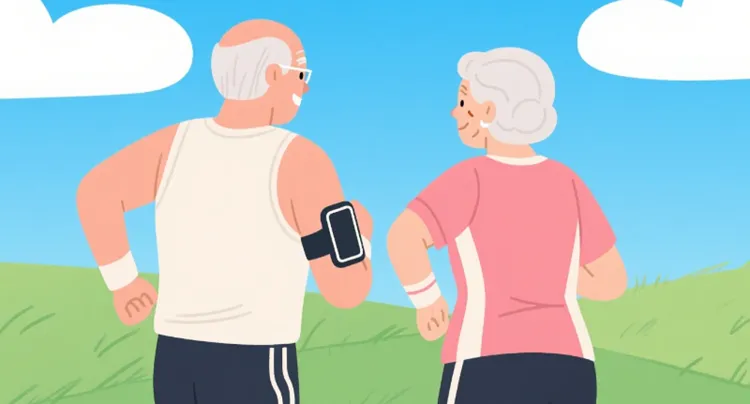Understanding physical gaps among peers: Insights from fitness enthusiasts

Author: Fitness Health Insights Team. Reviewer: Mo Dapeng, Chief Physician at the Neurointerventional Center of Beijing Tiantan Hospital, Capital Medical University, Professor, and Doctoral Supervisor. Curator: Zhang Wei, Health Program Coordinator.
Every morning, one can always see a distinct group of fitness enthusiasts: their hair is gray, yet they can consistently practice Tai Chi push hands; their backs are slightly hunched, but they still briskly walk around the path; their hands may tremble, yet they resolutely complete pull-ups.
In the traditional belief that older adults should simply rest, those seniors who insist on exercising are often labeled as making unnecessary efforts. But is this truly the case?
Long-term exercise slows down the aging process.
As individuals age, some subtle discomforts signal the progressive decline in bodily functions—muscle mass slowly decreases, leading to weakened limbs; joint cartilage gradually wears down, resulting in reduced flexibility during activities; and cardiovascular and pulmonary functions deteriorate, making them prone to shortness of breath even with slight exertion.
Elderly individuals who consistently engage in fitness activities retain more vitality in their bodies. When they regularly walk a certain distance each day or perform gentle stretching exercises, their muscles benefit from the repetition of these movements, enabling them to maintain a certain level of strength even in older age. Furthermore, moderate exercise helps keep joints flexible, and regular physical activity supports cardiovascular fitness, preventing shortness of breath from interrupting their daily activities.
During weather changes, many elderly individuals are susceptible to catching colds, which can take several days for them to recover from. However, those who maintain a consistent exercise routine have stronger immunity. Even if they occasionally catch a chill, their symptoms tend to be milder, and they recover more quickly.
Fitness can lead to less suffering.
The most visible benefit is the reduction of suffering associated with prolonged bed rest.
Many elderly people, in their final life stages, must lie in bed for long periods due to muscle weakness and joint stiffness. Over time, they are likely to develop bedsores on vulnerable areas such as their backs, where the slightest movement can elicit grimaces of pain. Moreover, being bedridden for extended periods can cause phlegm to accumulate in the lungs, leading to recurrent infections, which consequently result in persistent cough and chest discomfort that torment their bodies.
Elderly individuals who exercise regularly maintain good muscle strength and joint flexibility, thus reducing their need to be bedridden for long periods. This decrease in immobility minimizes the risk of bedsores and lung infections, leading to less physical suffering.
Many elderly individuals experience various pains in their later years. Some take painkillers daily, but long-term use can result in multiple side effects. In contrast, elderly individuals engaged in regular exercise benefit from enhanced circulation, which alleviates joint and muscle pain.
Some elderly people gradually lose their memory in their advanced years; they may not recognize family members or even know their current whereabouts. This confusion can induce feelings of fear and helplessness. However, exercise can supply the brain with more blood and oxygen, helping to retain its vitality.
Senior Safety Fitness.
Choosing the right exercise.
When elderly individuals select exercises, they should avoid activities that place excessive strain on their joints or are overly intense. It's advisable to begin with gentle exercises. Brisk walking is an excellent option; maintaining a comfortable pace, keeping their head up and chest out, and allowing their arms to swing naturally can enhance their ability to breathe fresh air while improving cardiovascular health.
Perform proper preparation and recovery before and after exercise.
Warming up before exercise acts as a reminder for the body, allowing it to gradually transition from rest to activity.
They can start by walking slowly for a few minutes to incrementally raise their heart rate; then, they should move their joints slightly to allow them to ‘wake up.’ Cooling down post-exercise can help alleviate fatigue and prevent muscle soreness. Each stretch should not be too forceful; rather, ensure that a slight stretch is felt in the muscles.
Avoid pushing oneself too hard during exercise.
Some elderly individuals observe others performing challenging stretches and may want to attempt it themselves. Some believe that training longer is better, but when they feel tired, they may push themselves to continue. This can easily lead to excessive fatigue and discomfort such as dizziness or palpitations. If one feels their heart racing or experiences rapid breathing during exercise, it is crucial to slow down or take a break.
© 2025 Health Tribe.


